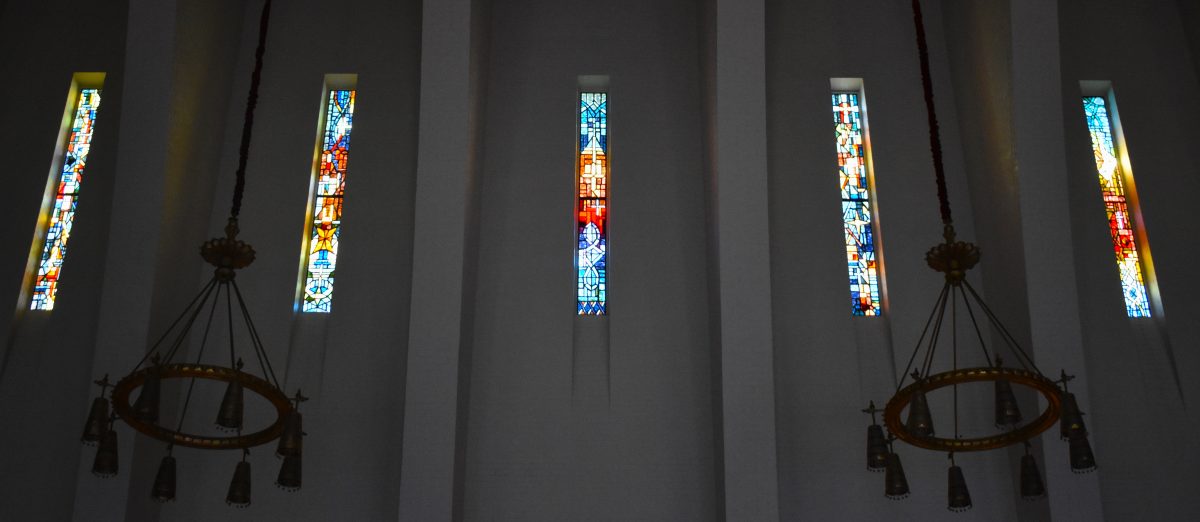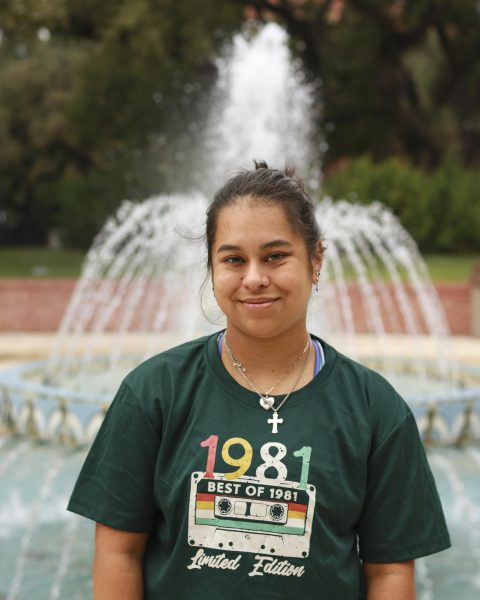Looking only at the facade of Margarite B. Parker Chapel, a visitor would not guess from the humble exterior what they would find inside. Walking into the chapel, there is a series of parabolic arches leading up to the altar, soft light coming from the stained glass windows that stretch up to the ceiling, and looking to the right, there are glass designs on the windows that provide a view of the meditation garden. The intricately carved wooden doors leading to the main room frame this massive picture.
Before Parker Chapel was built from 1964 to 1966, church services were held in a variety of spaces around campus, but campus president James W. Laurie wanted to change that. He wanted a chapel with a bell tower to be built right on campus. George Parker, a so-called“Petroleum pioneer,” donated $1 million dollars so that the chapel — named after his wife — would be built along with the other red-brick buildings under construction.
Esteemed architect O’Neil Ford — alongside Bartlett Cocke and Associates — directed the construction for Parker Chapel along with most of Trinity’s red-brick buildings. Ford created the designs for Trinity’s campus in the 1950s and is famous for combining indigenous Texan architecture with modern architectural trends.
Kathryn O’Rourke, professor of art history and architecture, has done extensive research on Ford and his works. In her opinion, Parker Chapel’s artistic merits as a building reflects the best aspects of his architectural style.
“It reflects Ford’s characteristically sophisticated engagement with historical forms, modern technologies and the work of the artists with whom he collaborated repeatedly,” O’Rourke said.
She also highlighted the contributions of Lynn Ford, O’Neil Ford’s brother. He created the chandeliers, screens and wooden doors of the chapel.
The stained glass in Parker Chapel was the work of Ruth Dunn (1912-1984), a local artist and stained glass designer. Dunn worked closely with O’Neil Ford as a part of the River Art Group Gallery in San Antonio.
Kipper Oyanguren, Dunn’s daughter, said that Dunn took Parker Chapel’s architecture into consideration when creating the stained glass windows. For example, she utilized the skinny windows to make abstract images that allowed for lots of sunlight to come through the stained glass.
“What’s interesting is that because of the design of that chapel and [because] of the placement of the meditation garden, she wanted [people] to be able to see the garden,” Oyanguren said. “So, the idea for that was strictly clear glass that had different textures.”
Today, there are many religious student organizations that use Parker Chapel for group and spiritual practice. The artistic aspects of Parker Chapel help provide a spiritual space for many people on campus.
Parker Chapel currently hosts several religious student organizations and is a performance space for the Trinity Choirs, Chamber Singers and visiting musicians. For the many spiritual student organizations on campus, the chapel is a meditative space that provides peace and clarity.
Alex Serna-Wallender, Trinity’s current chaplain, said that Parker Chapel’s architecture encourages mental and spiritual wellness for students and the Trinity community.
“I think that [Parker Chapel] meets that intention that it gives. It has a feeling of a space different from any other on campus, and it gives people a place to be both in their joy and celebration, as well as in their reflection and contemplation,” Serna-Wallender said. “I think that the architecture of the building invites that and invites that well.”









